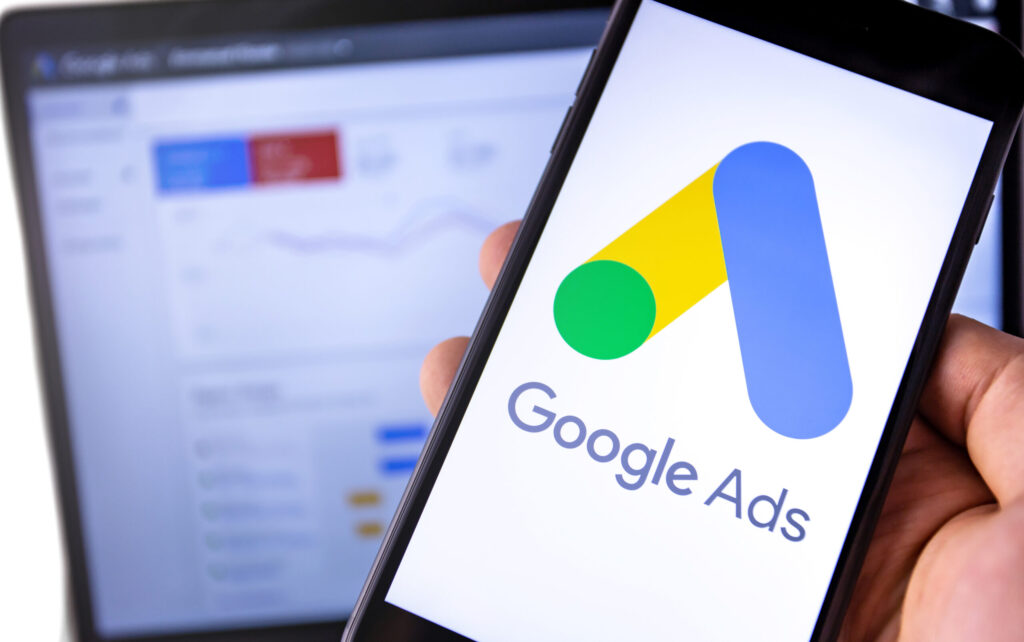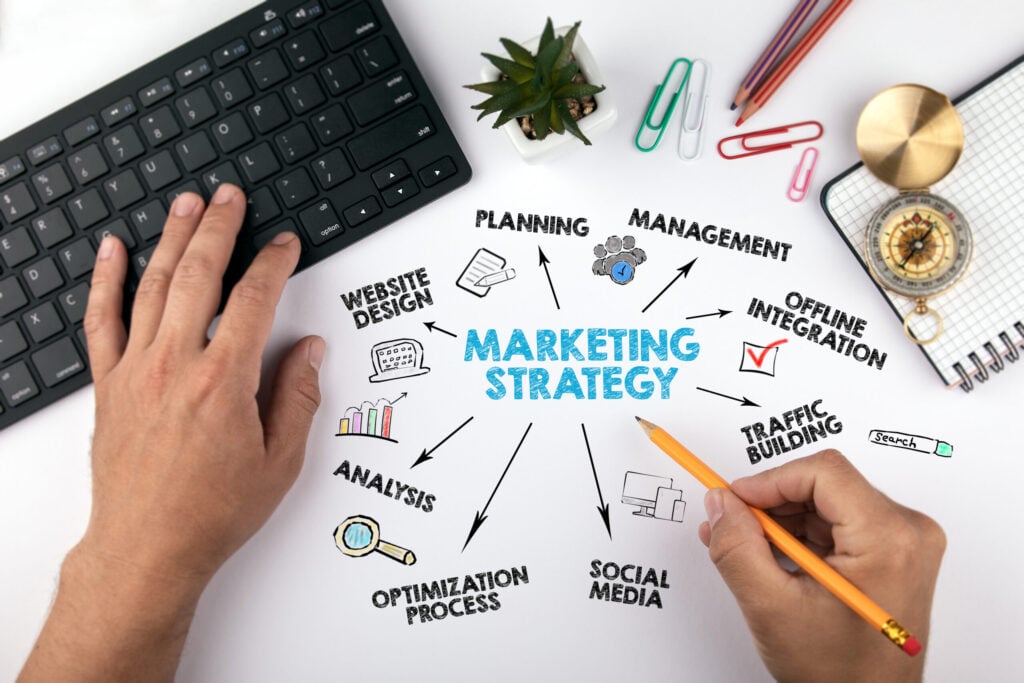Understanding your audience’s ‘intent’ has become the cornerstone of effective digital content and marketing strategies.
In an online world, where every brand clamours for attention, the days when a visually captivating advert or a catchy jingle would suffice are long gone. Instead, understanding your customers and their buying intentions, then crafting messages that resonate with their concerns, is the cornerstone of success.
At its core, intent revolves around deciphering what your audience is genuinely seeking. It’s about discerning their underlying motivations and desires when they type a query into a search engine, click on a link or even engage with a piece of content online.
It’s the answer to questions like:
- Why are they here?
- What are they hoping to achieve?
- Are they just browsing, or are they ready to make a purchase?
In the digital age, intent’s relevance can’t be overstated. The internet is a vast ocean of information, and users are spoiled for choice. As a content creator or marketer, if you don’t align your efforts with your audience’s intent, you’ll risk becoming just another drop in that ocean, easily overlooked and quickly forgotten.
Moreover, with advances in technology, the search engines are becoming increasingly adept at understanding user intent. They no longer solely rely on matching keywords, but are aiming to deliver search results that align most closely with what their users actually want. This shift makes understanding and catering to intent essential for brands aiming for visibility and engagement.
To put it succinctly, intent is the compass that should guide your content and marketing initiatives. It’s the difference between shouting into the void and having a meaningful conversation with your audience. And as we journey further into the heart of the digital age, its importance is only set to grow. Here’s why…
The shift toward intent-driven marketing
Marketing has changed. In the not-too-distant past, it was dominated by mass advertising. Vast billboards in every city, radio spots reaching every ear in town and prime time TV ads cast a wide net in the hope of catching as many eyes and ears as possible. The aim was quantity over quality, with the hope that out of the masses reached, a good number would engage.
But as the digital revolution took hold, this broad-brush approach began to wane. Businesses soon had the tools at their fingertips to understand audiences more intimately than ever before. Data became the new currency. With it came a seismic shift towards targeted messaging. Instead of sending a singular message to everyone, brands began crafting personalised messages designed for specific audience segments.
The reason? If you understand what your audience wants and can communicate directly to their needs, you’ll likely see better engagement and, consequently, better results.
In the early days of digital marketing, clicks and impressions were the golden metrics. They told you that someone saw your content or interacted with it.
But here’s the snag: they don’t always translate to genuine interest or meaningful engagement. Someone might click on your advert out of mere curiosity and then bounce away without any further interaction. So, for your business, relying solely on these metrics can paint a skewed picture of success.
In today’s sophisticated digital landscape, understanding the ‘why’ behind a click or an impression is paramount. It’s not just about knowing if someone interacted with your content, but understanding the intention behind that interaction.
This shift toward intent-driven marketing is your business’s key to building deeper, more meaningful connections with your audience.
Understanding the different types of intent
Now that we’ve established the importance of intent, let’s unpack the different types. Recognising and understanding these will help you tailor your strategies more effectively.
- Navigational intent: Imagine someone typing a brand name or a specific website into a search engine. Their aim is clear: they’re trying to get to a particular location online. They already have a destination in mind, whether it’s your business or another. This could be a golden opportunity to reinforce brand loyalty or, if they’re searching for a competitor, possibly even sway their preference.
- Informational intent: Here, users are on a quest for knowledge. They might be looking up ‘how to pot a plant’ or ‘tips for home renovation’. For your business, this is a chance to showcase your expertise. By providing valuable and relevant answers, you not only solve their immediate query but also position your brand as a trusted resource.
- Commercial intent: This is the ‘window-shopping’ phase online. Users with commercial intent are exploring, researching products or comparing options. But they’re not quite ready to commit. Your business can cater to this intent by highlighting your USPs, offering comparison charts or sharing customer testimonials.
- Transactional intent: This is the golden ticket of online interactions. Users with transactional intent are ready to act, be it signing up for a newsletter or making a purchase. For your business, it’s essential to make this process as seamless as possible. Ensure your calls-to-action are clear, your checkout process is smooth and any barriers to completion are minimal.
Understanding these varied intents is like having a roadmap to your audience’s desires. By tailoring your content and strategies to them, your business stands a better chance of not just reaching your audience, but truly connecting with them.

Why intent is crucial for content creation
In the vast digital content space, there’s a constant hum of voices, each vying for attention. Amid this white noise, how do you ensure your brand’s voice isn’t just heard but genuinely resonates with your audience?
The answer lies in the power of intent.
Think of your digital content as a key. For it to work, it needs to fit perfectly into the lock that is your audience’s intent.
When you align your content with what your users are genuinely seeking, you’re not only meeting their expectations but often exceeding them. This alignment means they find value in your content, leading to greater satisfaction. For your business, this translates to trust. And, as we all know, trust is the cornerstone of any lasting relationship.
Imagine reading an article or watching a video that feels like it’s speaking directly to you, addressing your queries and offering solutions to your specific problems. You’d likely spend more time with that content, share it or even take the desired action, right? That’s the magic of intent-driven content.
By tapping into the heart of what your audience seeks, you’re boosting engagement levels. Remember, content that resonates leads to more shares, longer dwell times and higher conversion rates for your business.
But what happens when content doesn’t match user intent?
Say a user searches for ‘simple vegan recipes’, and lands on a page detailing the history of veganism.
Interesting? Maybe.
Relevant to their immediate need? Not quite.
This is a case of mismatched intent. Such mismatches can lead to frustration, higher bounce rates and a tarnished brand image. For your business, it’s a missed opportunity and a reminder of the importance of consistently aligning content with intent.
Intent in Search Engine Optimisation
The world of Search Engine Optimisation (SEO) is ever-evolving, adapting to technological advances and user behaviour shifts. Intent plays a pivotal role in this fast-moving landscape.
Search engines have one primary goal: to provide users with the most relevant and valuable results. Gone are the days when stuffing your content with keywords would guarantee a top spot in the search engine results pages (SERPs).
Modern search algorithms, particularly Google’s, have become more sophisticated, aiming to comprehend the ‘why’ behind a search query. This evolution means that for your business, understanding and catering to intent is imperative.
Traditional keyword research was primarily about volume and competition. Today, it’s about delving deeper, understanding the intent behind those keywords.
Search tools like Google’s new search generative experience (SGE) and Microsoft’s OpenAI-powered Bing offer broader insights into the questions users have around a particular topic.
Creating content that addresses these specific questions will help position your brand as an authority in the field, as once the search engines have generated an AI response to the question, they’ll refer the user to credible, authoritative, trustworthy websites that contain more information about the subject in question.
Practical tips: crafting content that aligns with search intent
Search is a fast-moving feast.
Google has already started rolling out its SGE and recently announced Google Gemini, it’s next phase multimodal search platform that’s set to compete with ChatGPT. Some commentators are saying it’s launch will represent the ‘biggest SEO disruption in 25 years’.
Keeping up with the latest changes and trends is challenging. However, being disciplined with your content and making sure it follows the basics will stand your website in good stead as these new developments take root. Some of the fundamentals to bear in mind include:
- Understand different user intents: Familiarise yourself with the various types of intent. Tailor your content to match these specific needs.
- Start with the user in mind: Before penning down content, ask, ‘what would a user hope to find when they search for this keyword?’
- Analyse SERPs: Look at the top results for your target keyword. What kind of content is ranking? What can you offer that’s different or better?
- Use long-tail keywords: These often come with clear intent. For instance, ‘buy ladies red vegan leather boots’ indicates a stronger transactional intent than ‘buy red boots’.
- Optimise for voice search: With the rise of smart speakers and voice-activated assistants, more users are conducting searches through voice. Craft content that answers questions directly, using a natural, conversational tone.
- Incorporate visual elements: Sometimes, intent is best addressed through visuals. Infographics, charts and videos can provide immediate answers and improve user engagement.
- Engage with your audience: Encourage comments and feedback on your content. It’s a direct way to understand if you’re meeting their intent and where improvements can be made.
- Use topic clusters: Instead of isolated content pieces, create topic clusters. Have a core piece of ‘pillar’ content and link it to related, more specific pieces. This not only boosts SEO but ensures you cover a topic comprehensively, addressing various facets of user intent.
- Monitor analytics and adjust: Use tools like Google Analytics to monitor how users are interacting with your content. High bounce rates with short dwell times may indicate a mismatch in intent. Adjust content accordingly based on these insights.
- Stay informed on algorithm updates: Search engines constantly tweak their algorithms. By staying updated, you ensure your content strategies align with the latest factors that determine search relevancy.
- Build trust with consistent quality: Users often have an underlying intent to find reliable, trustworthy information. Regularly producing high-quality, accurate content will establish your business as a credible source.
- Encourage social shares: Social signals can be an indirect indicator of intent satisfaction. If users share your content, it likely resonated with them and met their intent. Plus, it amplifies your reach. Google’s incoming ‘Perspectives’ tab is a good example of how content shared widely on social media can boost your visibility in search.
- Update content regularly: Trends and intent change. So, ensure your content stays relevant by revisiting and updating it periodically.
Incorporating intent into your SEO strategy isn’t just about boosting rankings; it’s about creating meaningful connections with your audience. As the digital landscape continues to evolve, keeping intent at the forefront ensures you and your business remain not only visible, but genuinely valued.

Intent’s role in paid marketing campaigns
Venturing into the world of paid marketing can often feel like navigating a labyrinth.
Each turn you take or decision you make could lead to exceptional results or wasted opportunities. And this is where the magic of intent wields its power, shining a light onto pathways that promise genuine engagement and tangible results.
Imagine the delight of a parched traveller finding an oasis in the desert. You can provide this experience to potential customers when your adverts align perfectly with their intent.
By honing-in on intent-driven data, you’ll ensure that your paid ads find their way to those actively seeking your services or products.
For your business, this means fewer shots in the dark and more bullseyes. When you understand the intent behind a search or a click, you can tailor your advertisements to resonate powerfully. Instead of casting a vast, unspecific net, you’re wielding a precision tool, capturing the attention of those most likely to engage, convert and become loyal customers.
One of the most disheartening experiences with paid ads is watching precious budget drain away without seeing corresponding results. Often, this disconnect stems from ad content that doesn’t match the intent of the viewer. It’s akin to offering ice skates for sale in the Sahara – regardless of the quality of the skates or the allure of the ad, the context is mismatched.
Again, this is where understanding intent becomes the keystone of efficiency. When you craft campaigns that align with the specific desires, needs and questions of your target audience, you eliminate wasteful spending on mismatched audiences.
Instead of broadcasting to the many in hopes of reaching the few, you speak directly to an engaged, intent-rich audience ready to listen.
Enhancing user experience with intent
User experience (UX) stands at the epicentre of successful online engagement. But what elevates UX from functional to effective? The answer is a deep understanding of intent.
By tapping into the ‘why’ behind a user’s actions, you can craft experiences that exceed their expectations. Imagine walking into a shop where the sales assistant instantly knows your style, size and the exact occasion you’re shopping for. Online, this level of personalisation is possible when you harness intent signals.
By studying the breadcrumbs of data users leave behind – from their search queries, clicks and browsing patterns – you can tailor their journey on your platform. For your business, this means presenting products, services or content that directly cater to a user’s immediate needs and desires.
Bounce rates can be a thorn in the side of many digital platforms, but they can be misleading, because they don’t reflect the duration a visitor spends on a page. A user could immerse themselves in your content for hours, and it would still be recorded as a bounce. Therefore, educational or informational pages naturally have higher bounce rates. A high bounce rate on such pages doesn’t necessarily signal a poor user experience. In fact, visitors may be so informed by your content that they later return and make a purchase.
So, before you rush to address high bounce rates on specific pages, consider the content’s nature. An elevated bounce rate on informative pages isn’t always a cause for concern.
However, high bounce rate can be symptomatic of a mismatch between user intent and the content presented, especially on landing pages, or pages where the user is expected to take action like clicking on a link, filling in a form or making a purchase. In these cases, fine-tuning your content to resonate with the intent will drastically increase the chances of users sticking around. And when users stay, they engage.
This engagement can manifest in various forms: reading a blog post, signing up for a newsletter or making a purchase. It’s a win-win: users find what they’re looking for and your business sees heightened conversions.
Challenges and considerations
The path ahead is not without hurdles. While the power of intent can’t be denied, it’s essential to navigate this realm with awareness and foresight. Like any marketing strategy, over-relying on intent can become a slippery slope.
While it’s crucial to understand what your audience seeks, it’s equally vital not to pigeonhole them into narrow categories. People evolve, and their needs change. Relying solely on past intent can make your business miss out on broader opportunities and emerging trends.
Remember, versatility is key.
While tailoring content to specific intents ensures deeper engagement with a particular audience segment, you don’t want to inadvertently exclude potential new audiences.
It’s the classic depth vs breadth debate.
The trick? Weave in a mix of both specific intent-driven content and broader themes. This approach ensures you cater to your core audience while remaining open to new engagements.
And in an era where data privacy concerns are paramount, it’s essential to tread carefully. Collecting data to gauge intent must respect boundaries. Always ensure that your methods of data collection comply with privacy laws (like GDPR). Be transparent with your audience about the data you collect, its purpose and give them an easy opt-out option. Trust, once lost, is hard to regain.

The future of intent-driven marketing
The landscape of intent-driven marketing is ever-evolving, and with it come new opportunities and challenges. It isn’t just about understanding current intent, but predicting future ones. With the advent of advanced predictive analytics, businesses can now forecast likely consumer behaviours.
Imagine being a step ahead, crafting content or products that cater to an intent your audience hasn’t even realised yet. It’s proactive marketing at its best.
Tools that help identify intent are becoming more sophisticated. From AI-driven chatbots that understand and respond to user queries in real-time, to advanced CRM systems that can segment users based on nuanced behaviours, the future is all about precision.
If there’s one takeaway for you, it’s this: the world is shifting towards an even more user-centric search model. As a business, it’s essential to keep evolving.
So, invest in training and tools that enhance your understanding of intent. Foster a culture of empathy, where understanding and meeting user needs becomes second nature. And if you don’t have the capacity or capabilities in-house, work with a digital marketing agency that has these specialisms.
How can QBD help?
Intent-driven marketing is as exciting as it is challenging. In the face of fleeting digital interactions, intent offers depth, presenting an opportunity to not only meet, but anticipate and exceed user expectations. By staying informed, ethical and user-centric, you and your business can thrive in this new terrain.
Understanding the ‘why’ behind each click, each search and each engagement has never been more critical. It’s this understanding that forms the bedrock of genuine, meaningful connections with your audience.
By adopting an intent-first approach, you’re not merely rolling the dice and hoping for the best. Instead, you’re strategising with purpose and precision. The rewards? Greater ROI, a satisfied and loyal user base, and the unparalleled satisfaction of knowing that your content, products or services genuinely resonate.
So, as we wrap up, here’s an invitation for you: take a moment to assess your current marketing strategy. Is it skimming the surface, or delving deep into the realm of intent?
Wherever you are in your journey, remember that the path of intent, while filled with challenges, is also ripe with immense potential. We can help you unlock it.
To find out more and for a free, informal, no-obligation chat about how we can help place intent at the heart of your content strategy, give us a call today.
About the author
Jon Smart is our Head of Creative Content. He works with a range of QBD clients, producing engaging, SEO-friendly website and digital content to help them reach a wider audience. He does this by gaining a deep understanding of who our clients are, what they do, who their customers are and what makes them special, then helps them to tell their brand story in a way that connects with their target audiences.

